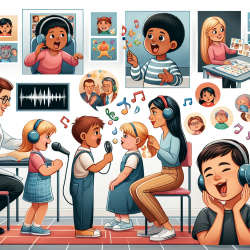As a dedicated speech-language pathologist (SLP) focused on data-driven decisions, it's essential to stay informed about the latest research and best practices in our field. The Canadian Journal of Speech-Language Pathology and Audiology (CJSLPA) offers valuable insights into various aspects of speech-language pathology, particularly concerning children. This blog post will highlight key findings from recent research published in the CJSLPA, focusing on emergent literacy skills, phonological awareness in children with Down syndrome, and the impact of classroom acoustics on learning.
Emergent Literacy Skills in Dual Language Learners
One significant study examined emergent literacy skills in preschoolers with language disorders, comparing monolingual English speakers to dual language learners (Lamont et al., 2011). The researchers found that while there were no significant differences between the two groups in overall literacy skills, parental involvement played a crucial role in children's literacy development. The study underscores the importance of engaging parents in early literacy activities, especially for dual language learners who may face additional challenges.
Phonological Awareness in Children with Down Syndrome
Another critical area of research focuses on developing phonological awareness skills in children with Down syndrome (Cleave et al., 2011). The study implemented a 22-week intervention program targeting rhyming and phoneme identification. Results indicated significant improvements in phoneme identification in the final position, with a large effect size. This finding suggests that targeted interventions can effectively enhance phonological awareness in children with Down syndrome, a population that often struggles with these skills.
Classroom Acoustics and Learning
Classroom acoustics significantly impact students' ability to hear, understand, and learn. A comprehensive study by Rubin et al. (2011) investigated the acoustic environment in 60 kindergarten to grade 3 classrooms. The study found that only 31% of classrooms met recommended noise level standards, highlighting the need for better acoustic design in educational settings. Additionally, the use of sound field amplification systems was shown to improve students' focus and reduce distracting behaviors, emphasizing the importance of optimizing classroom acoustics for better learning outcomes.
Implications for Practice
These studies provide valuable insights for SLPs working with children. Engaging parents in literacy activities, implementing targeted phonological awareness interventions, and advocating for improved classroom acoustics are all strategies that can significantly enhance children's learning experiences. By staying informed about the latest research and applying these findings in practice, we can create better outcomes for the children we serve.
To read the original research papers, please follow these links:
By integrating these evidence-based practices into our work, we can make a meaningful difference in the lives of children with speech and language disorders.










